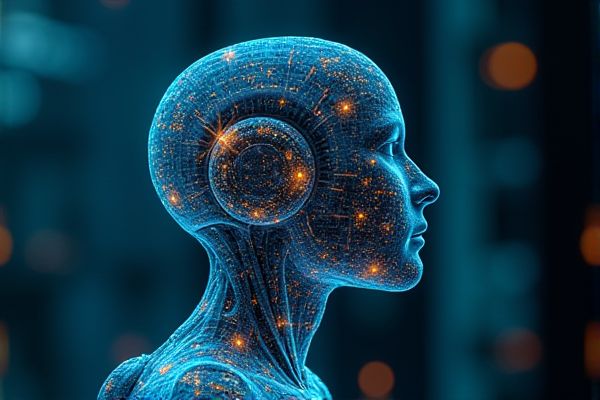
AI enhances historical research by analyzing vast amounts of data quickly, uncovering patterns and insights that may not be easily visible to researchers. Natural language processing tools enable the examination of historical texts, identifying themes, sentiments, and language usage trends over time. Machine learning algorithms can help in dating artifacts or texts, offering more accurate timelines based on existing data. Automated transcription services also aid in converting historical documents into digital formats, making them more accessible for further study and analysis.
AI usage in historical research
**Pattern Recognition**
AI's ability to recognize patterns within historical datasets can significantly enhance research efficiency. For instance, institutions like the British Museum utilize machine learning algorithms to uncover trends in artifacts and historical documents. This technology enables historians to identify connections and correlations that may not be immediately visible through traditional methods. The potential for discovering new insights could reshape our understanding of historical narratives.
**Data Digitization**
AI can enhance historical research through data digitization, making vast archives more accessible and searchable. By converting physical documents into digital formats, researchers can quickly locate specific information, such as the records from the Library of Congress. This technology reduces the time spent on manual searches and allows historians to analyze trends more efficiently. The potential for uncovering hidden connections in large datasets could lead to new insights in the study of history.
**Textual Analysis**
Textual analysis in historical research can enhance the understanding of primary sources by identifying patterns and trends within large datasets. AI tools can automate the analysis of vast amounts of text, enabling researchers to uncover connections that may not be immediately apparent. For example, the use of natural language processing (NLP) can reveal the sentiments present in historical documents. This capability may lead to more nuanced interpretations of events, potentially resulting in new insights into historical narratives.
**Image Restoration**
AI can enhance historical research by providing advanced image restoration techniques, allowing for clearer analysis of damaged artifacts or documents. Techniques such as convolutional neural networks can recover missing details in historical photographs, enabling researchers to gain new insights. For example, institutions like the British Museum could use these advancements to preserve visual records of ancient artifacts. This could lead to a better understanding of cultural artifacts and their historical context.
**Predictive Modeling**
AI can enhance historical research by utilizing predictive modeling to analyze patterns and trends from existing data. For instance, researchers could use predictive models to forecast the outcomes of historical events based on various socio-economic factors. This methodology can reveal potential correlations that may not be immediately apparent through traditional analysis. As institutions like the American Historical Association explore these technologies, the possibility of gaining deeper insights into past societies increases significantly.
**Knowledge Graph Construction**
AI can enhance historical research by streamlining the process of Knowledge Graph Construction, allowing for more organized and interconnected data representation. This technology can facilitate the identification of relationships between historical events, figures, and timelines, improving scholarly analyses. For example, using AI to link data from various archives can reveal new insights about influential institutions like the Library of Congress. The potential for advanced analytical tools in this field may lead to more comprehensive understanding and interpretation of historical narratives.
**Language Translation**
AI can significantly enhance historical research by providing advanced language translation tools that improve access to primary sources. Researchers might use platforms like Google Translate for documents in different languages, unlocking valuable insights into past events. The ability to quickly translate texts could facilitate cross-cultural studies, enabling a more comprehensive understanding of historical contexts. This advancement in translation technology holds the potential to enrich academic discourse and broaden the reach of historical findings.
**Historical Simulation**
Historical simulation offers the potential to recreate past events accurately, aiding researchers in visualizing scenarios that may not be well-documented. Institutions like the Smithsonian have begun integrating AI tools to enhance their historical analyses. The use of probabilistic models in simulations can provide insights into social dynamics and decision-making processes. This approach may lead to a deeper understanding of historical contexts and influence future interpretations of historical narratives.
**Archival Retrieval**
AI can enhance historical research by improving archival retrieval processes. For example, utilizing AI algorithms can streamline the search and organization of documents within institutions like the National Archives. This technology increases the likelihood of uncovering obscure yet relevant materials that might have been overlooked. Researchers can benefit from faster access to data, improving the efficiency and depth of their analyses.
**Anomaly Detection**
AI can enhance historical research by applying anomaly detection techniques to identify unusual patterns in large datasets. For example, researchers studying archival documents can uncover discrepancies that might suggest forgeries or misattribution. By detecting these anomalies, historians can gain deeper insights into the authenticity and context of primary sources, potentially reshaping our understanding of historical narratives. The capability to analyze vast amounts of data efficiently increases the chance of discovering hidden connections among historical events, enhancing overall research outcomes.
 techknowy.com
techknowy.com